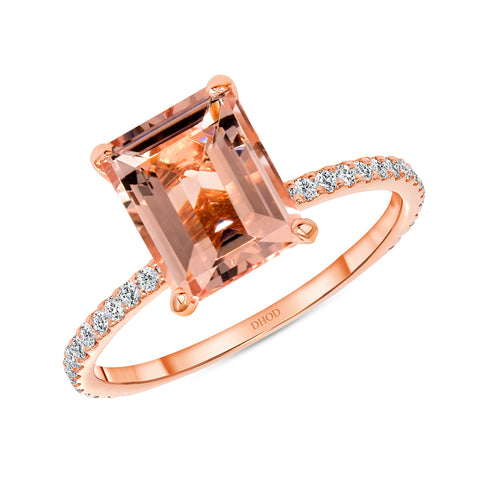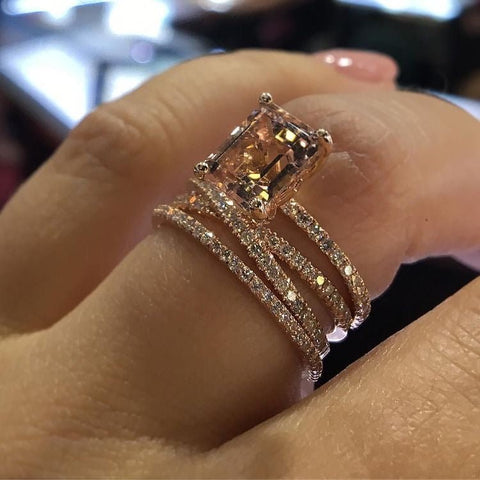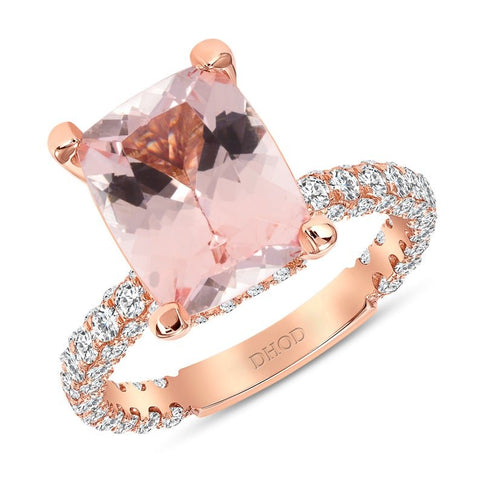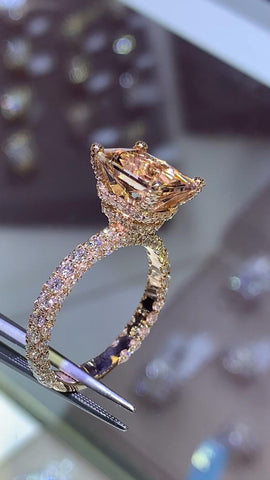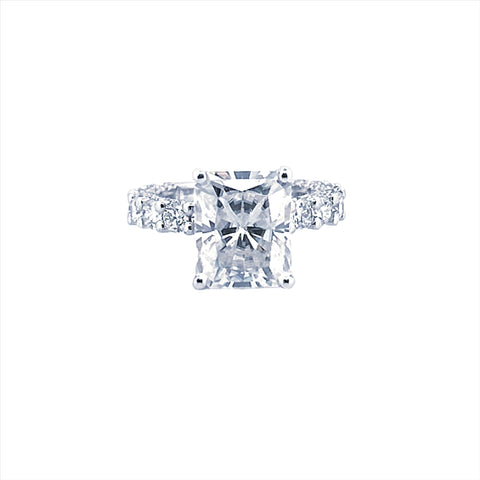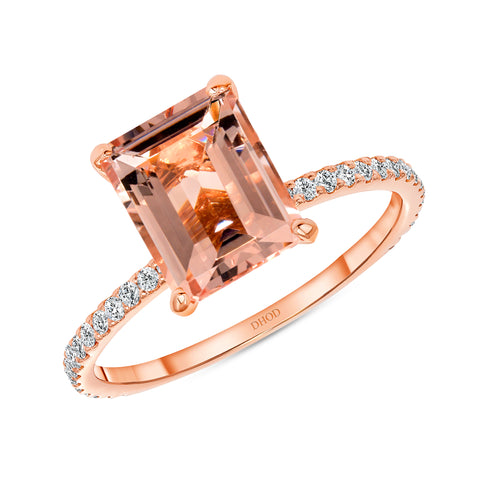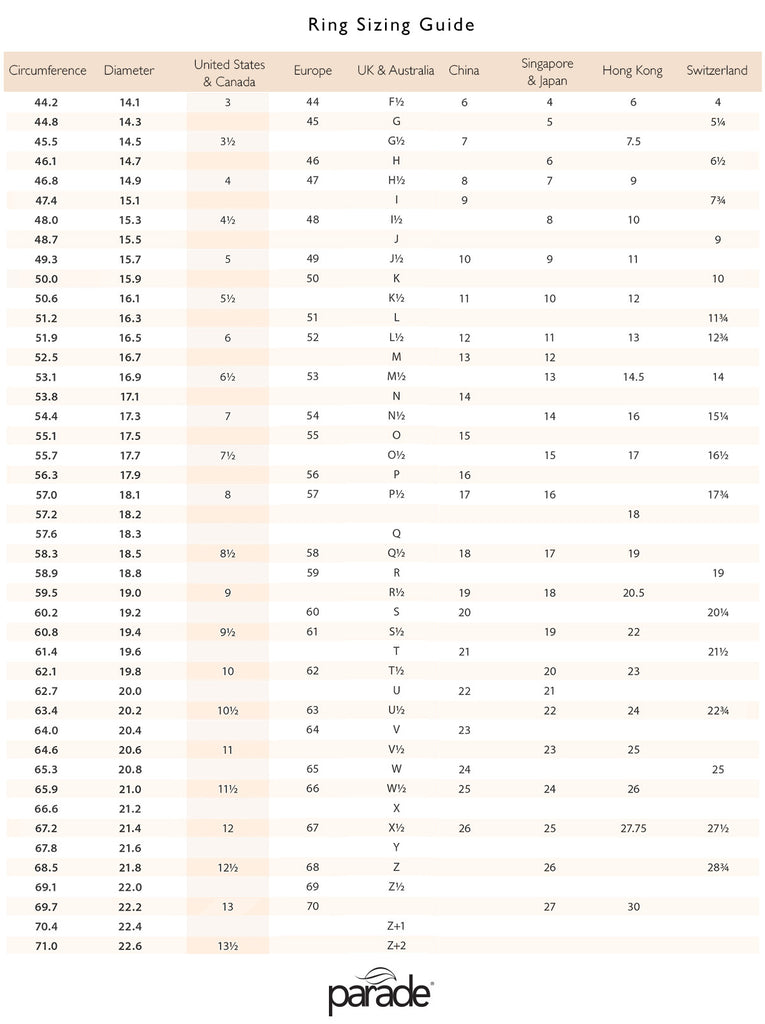Recent Articles
-
Diamond Initial Jewelry: The Perfect Gift May 10, 2023
-
Diamonds Bracelets in David's House of Diamonds at a Glance May 03, 2023
-
Your Go-to Guide for Different Ring Setting Styles and Types March 24, 2023
Rose Gold, White Gold, Yellow Gold, and Platinum: What's the Difference?
Gold is a classic choice for an engagement ring. While pure gold is too soft for jewelry, it has the perfect durability when mixed with other metals, making the most elegant pieces of jewelry.
Here we’ll take an in-depth look in order to better understand the differences between gold types and guide you to the perfect gold for your engagement ring—a piece of jewelry you'll treasure for a lifetime.
Rose Gold
Rose gold is a blend of pure gold, copper, and silver, resulting in a subtle and elegant pinkish hue; this type has surged in popularity in recent years.
Although the color of rose gold may change over time, it doesn't tarnish, making it a wonderful choice for an engagement ring. And if you have warm or neutral-toned skin, you'll find that rose gold can accentuate your features. Be mindful, though, that rose gold is not a hypoallergenic metal.
Rose gold's price depends on the karat of gold (the gold content) just like other types of gold. The amount of copper content brings the price down, offering a contemporary look that won't break the bank.
White Gold
Originally crafted as an imitation of platinum, white gold has a beauty all its own. Its white color comes from nickel and zinc blended with pure gold to form an alloy. White gold sometimes has a rhodium coating to give it a luster similar to platinum.
White gold is more affordable than platinum but looks just as timeless. Take care of your white gold engagement ring, though; over time, the rhodium plating can wear away and reveal a yellowish hue.
Yellow Gold
A traditional metal for engagement and wedding rings, yellow gold is a popular choice in a range of price points. Yellow gold was out-of-style for a while but this classic metal has made a recent comeback, taking the stage again as a mix of fashionable, modern, and vintage all at the same time. This metal is an outstanding choice if you're a fan of vintage-style engagement rings, and it naturally brings out the beautiful warm tones of darker or olive skin types.
The karat determines the price of gold. The higher the karat, the purer the gold, and the more expensive it is. Be careful with yellow gold, though, as it requires regular polishing to keep it looking its best.
Platinum
Platinum is a naturally white, extremely durable metal. Rather than a type of gold, it is a much rarer metal at the higher end of the budget.
Incredibly strong and resistant to tarnishing, platinum is ideal for setting diamonds and other precious stones. Usually, jewelers craft platinum rings from 95% pure platinum with other metals of similar properties.
Platinum feels reassuringly weighty because it is denser than gold, which is part of the appeal when buying platinum jewelry. With a similar appearance to white gold, it often suits cooler-toned complexions and fair skin.
Which is the perfect gold for you?
When choosing your engagement ring, whether in-person or from an online engagement ring store, you'll want to consider a few factors:
- Your budget: Platinum is the most expensive, and purer gold (higher karat) costs more than lower karat gold.
- The maintenance each metal requires: White gold is the hardest to maintain, and platinum is the easiest.
- The look you're going for: Some types of gold are better suited to vintage looks, while others are better for modern styles.
- Your complexion: Yellow and rose gold suit warmer skin tones, and white gold and platinum are ideal for cooler and fairer skin.
